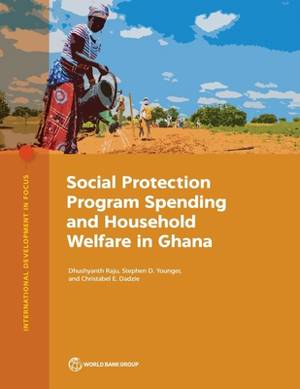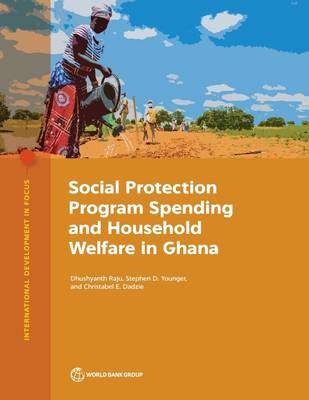
Bedankt voor het vertrouwen het afgelopen jaar! Om jou te bedanken bieden we GRATIS verzending (in België) aan op alles gedurende de hele maand januari.
- Afhalen na 1 uur in een winkel met voorraad
- Gratis thuislevering in België vanaf € 30
- Ruim aanbod met 7 miljoen producten
Bedankt voor het vertrouwen het afgelopen jaar! Om jou te bedanken bieden we GRATIS verzending (in België) aan op alles gedurende de hele maand januari.
- Afhalen na 1 uur in een winkel met voorraad
- Gratis thuislevering in België vanaf € 30
- Ruim aanbod met 7 miljoen producten
Zoeken
Social Protection Program Spending and Household Welfare in Ghana
Dhushyanth Raju, Stephen Younger, Christabel Dadzie
€ 67,95
+ 135 punten
Omschrijving
Ghana administers multiple social protection programs. One of these, pensions provided by the Social Security and National Insurance Trust, has a long history, but others--the Ghana School Feeding Programme, Labor-Intensive Public Works program, Livelihood Empowerment Against Poverty program, and National Health Insurance Scheme--have been introduced and expanded only over the past two decades. Social Protection Program Spending and Household Welfare in Ghana assesses the performance of the government of Ghana's main social assistance and social insurance programs. The study discusses the programs' main design and implementation parameters; summarizes existing evaluative and operational research; and examines the patterns and trends in program benefit spending, using government administrative data, and the programs' coverage rates, incidence, and effectiveness for reducing poverty and inequality, using recent national household sample survey data. Furthermore, the study examines the relationship between household participation in social assistance programs and exposure to adverse covariate shocks--specifically, possible weather-related shocks--on the basis of high-resolution climate risk maps for the country.
Specificaties
Betrokkenen
- Auteur(s):
- Uitgeverij:
Inhoud
- Aantal bladzijden:
- 136
- Taal:
- Engels
- Reeks:
Eigenschappen
- Productcode (EAN):
- 9781464820052
- Verschijningsdatum:
- 27/10/2023
- Uitvoering:
- Paperback
- Formaat:
- Trade paperback (VS)
- Afmetingen:
- 216 mm x 279 mm
- Gewicht:
- 331 g

Alleen bij Standaard Boekhandel
+ 135 punten op je klantenkaart van Standaard Boekhandel
Beoordelingen
We publiceren alleen reviews die voldoen aan de voorwaarden voor reviews. Bekijk onze voorwaarden voor reviews.









